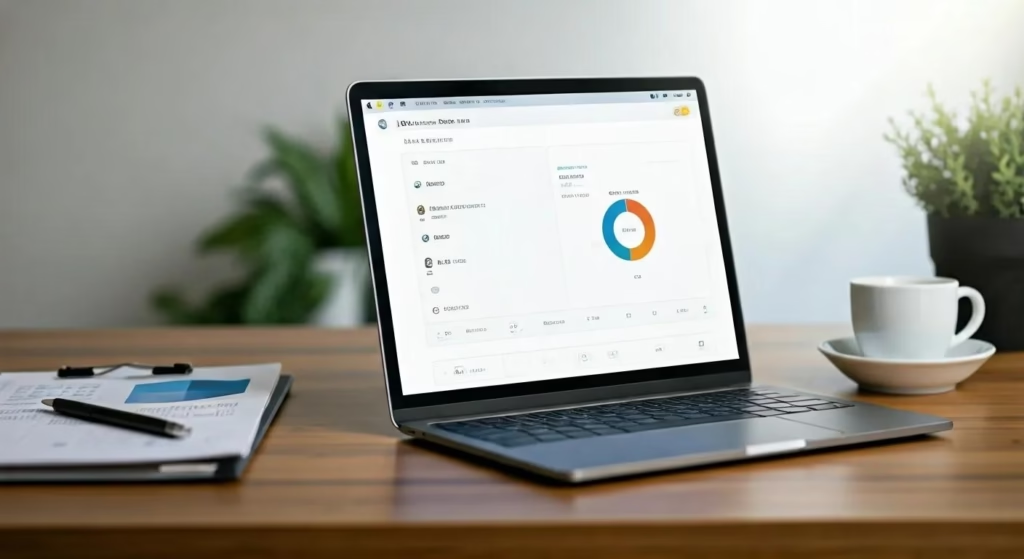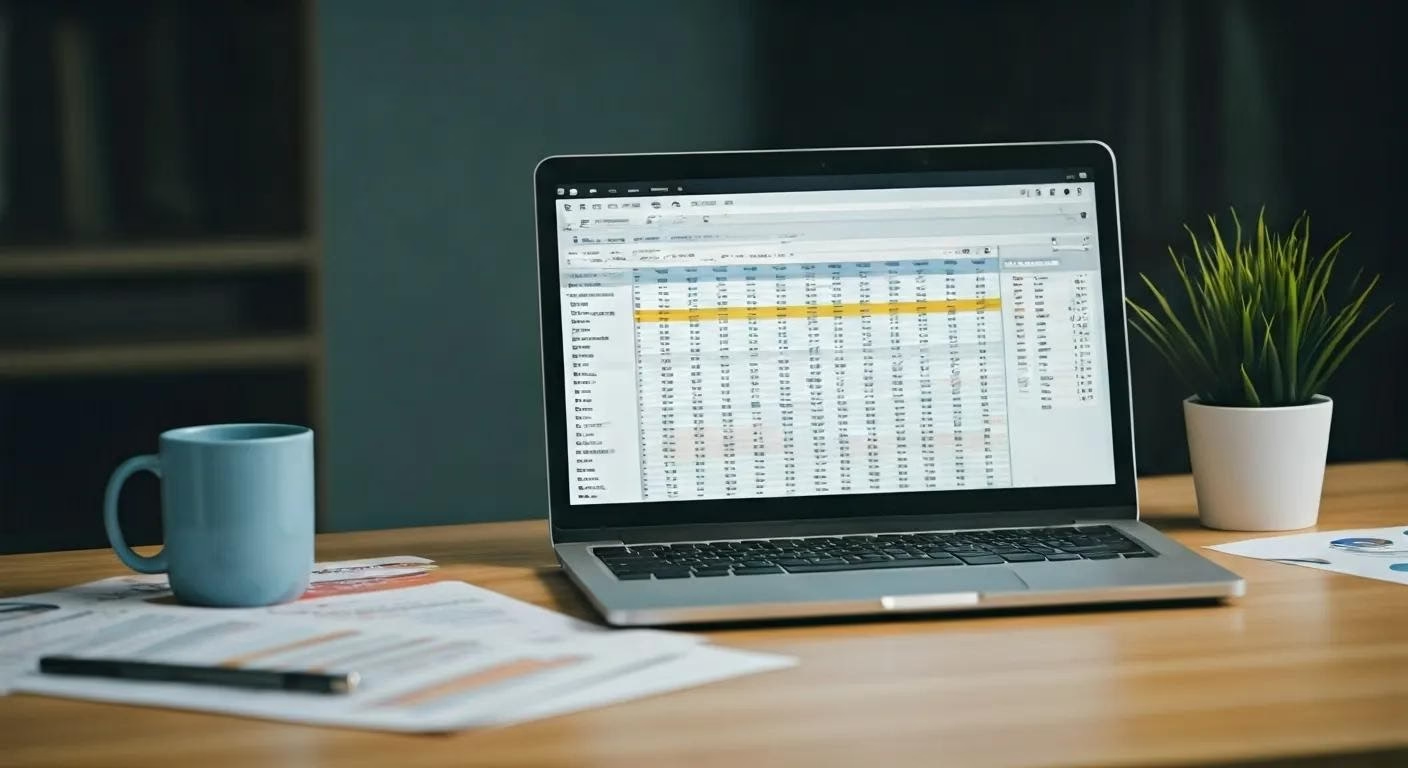The 5-Minute Monthly Budget: How to Get Your Finances Under Control Quickly and Simply
Managing personal finances can be overwhelming when juggling multiple income sources, bills, and savings goals. The 5-Minute Monthly Budget offers a streamlined approach that enables you to plan your expenses and income in just five minutes each month. This method focuses on simplicity without sacrificing accuracy, allowing you to quickly identify your income streams, fixed and discretionary expenses, and savings goals. Rather than spending hours on complex spreadsheets, this budgeting tool helps you stay informed and proactive about your finances.
This article explains why the 5-Minute Monthly Budget is effective, how to create your own tailored version, and how to track expenses and manage debt. It also includes Canadian budgeting tips and saving strategies for different audiences such as freelancers, students, and young professionals. By the end, you will understand how to use this rapid budgeting tool to streamline your finances and work toward long-term financial wellness.
Transitioning now into the detailed breakdown…
What Is the 5-Minute Monthly Budget and Why Is It Effective?
The 5-Minute Monthly Budget is a simplified personal finance tool that helps you quickly organize and manage monthly income and expenses. Its strength lies in its focused structure that emphasizes essential income sources and major expense categories without overwhelming you with excess details.
This method utilizes a concise template to track monthly revenues, fixed expenses, variable expenditures, and savings targets. By eliminating unnecessary complexity, it rapidly clarifies your financial situation. It is especially effective because it reduces the time required for budgeting, making it accessible for busy schedules. With a quick review each month, you can prevent overspending by setting realistic limits and maintaining consistency in your financial monitoring.
Financial experts appreciate simple budgeting tools because they lower stress and promote proactive financial management. When used monthly, the method helps consolidate financial data, connect goals with spending, and foster a habit of mindful budgeting. In Canada, where cost structures and tax policies are complex, this method has been adapted with local insights to help achieve financial stability across various income levels, including debt consolidation.
How Does the 5-Minute Budget Simplify Personal Finance?
The 5-Minute Budget cuts through financial clutter by focusing only on core categories. You begin by listing your primary income, followed by the most consistent expenses such as rent, utilities, and transportation. This minimalistic approach prevents distraction by minor or irregular expenditures and emphasizes the big picture.
Because the process takes only a few minutes each month, it encourages regular use. This simplicity builds a foundation for more detailed financial planning over time while allowing you to quickly understand your cash flow. A swift update minimizes procrastination and keeps your finances under continuous review.
What Are the Key Benefits of a Quick Monthly Budget?
Key benefits include significant time savings, improved expense tracking, and clear saving strategies. A brief monthly review gives you a snapshot of your net income to guide short-term financial decisions. The method is flexible and easily adjusted when your situation changes. It serves as both a financial health check and a tool for personal accountability, helping you avoid overspending and allocate funds toward emergencies, debt reduction, or long-term investments. Overall clarity improves decision-making by quickly revealing unnecessary expenses.
How Does This Budgeting Method Fit Canadian Budgeting Tips?
Canadian budgeting often stresses tracking every dollar due to higher living costs and various taxes and fees. The 5-Minute Monthly Budget fits this approach by providing immediate visibility into cash flow. It helps Canadian consumers navigate fluctuating currencies, utility expenses, and even weather-related cost changes while promoting financial discipline. Many Canadian financial advisers recommend simple, consistent routines that reduce discretionary spending and keep every expense aligned with overall financial goals. This proactive method enables Canadians to avoid reactive spending.
How Do You Create a Simple 5-Minute Monthly Budget?

Creating the 5-Minute Monthly Budget starts with gathering your income and expense data, then simplifying it into broad categories. The process is quick and effective because it requires only basic financial information. Begin by recording your total monthly income from all sources. Next, list essential expenses such as housing, transportation, and food, and include any recurring bills like insurance premiums or subscriptions. The beauty of this method is its minimalism.
Using a budgeting template or app that follows this simple format can save time. Many free or subscription tools let you customize categories while maintaining a clear overall structure. The goal is to capture your major cash flows without getting lost in minor expenses. Once categories are set, calculate the difference between your income and essential expenses. The remaining funds can then be directed toward savings, debt repayment, or discretionary spending. The process’s immediacy allows you to adjust categories in real time when unexpected expenses occur.
What Income and Expense Categories Should You Include?
Generally, the core categories are:
- Income: Includes primary salary, side gigs, and passive income (like dividends).
- Fixed Expenses: Rent/mortgage, utilities, insurance premiums, and subscriptions.
- Discretionary Spending: Non-essential expenses such as dining out, entertainment, and hobbies.
- Savings: Contributions to emergency funds or retirement accounts.
Keeping these categories broad yet inclusive ensures no significant cash flow is missed while keeping the budget simple and functional. Consider merging similar expenses (e.g., grouping all utilities) to avoid clutter and simplify monthly updates.
How Can You Use Budgeting Templates and Tools Effectively?
Budgeting templates and digital tools enhance the 5-Minute Monthly Budget by reducing guesswork. Available as downloadable spreadsheets or mobile apps, they often integrate with your bank accounts for automatic transaction updates, which reduces manual errors.
Select a tool that allows customizable categories matching your financial needs. Regularly update your template with the latest figures to ensure accuracy. Visual aids such as graphs and charts can offer at-a-glance views of spending trends—like the percentage spent on groceries versus savings—which immediately highlight areas for improvement. Consistent use of these tools reinforces budgeting habits and helps quickly identify deviations from your plan.
What Are the Best Practices for Setting Realistic Budget Limits?
Set realistic limits by first understanding both your fixed and variable expenses. Avoid budgets that are too strict or too lenient. Start by examining your past spending patterns to set practical limits, then use your template to simulate different income-expense scenarios. Adjust limits for balance and flexibility.
It is important to build in a buffer—typically 5-10% of your income—to cover unexpected expenses or fluctuations in discretionary spending. Compare your limits against local spending averages (such as those from Canadian financial statistics) to ensure they are reasonable. Regularly revisiting and adjusting your limits helps maintain a sustainable framework for both immediate needs and long-term goals.
How Can You Track Your Expenses to Stay on Budget?
Tracking expenses is critical to any budgeting method, and the 5-Minute Monthly Budget is no exception. Effective tracking not only tells you how much you spend but also reveals patterns that may need attention. You can track expenses using manual log sheets or digital apps that automatically categorize spending. For best results, update your tracking consistently—ideally weekly or biweekly—to keep your monthly overview accurate.
Regularly updating your budget helps you compare projected versus actual spending. This comparison allows you to make timely adjustments before small issues become larger problems. Tools like budgeting apps or simple spreadsheets can send alerts when spending exceeds set thresholds, reinforcing disciplined financial behavior.
What Are the Best Methods for Tracking Monthly Expenses?
Effective methods include:
- Mobile Apps: Link them to your bank accounts to automate categorization.
- Digital Spreadsheets: Use tools like Excel for real-time updates.
- Pen-and-Paper Logs: A simple method if you prefer writing down each transaction.
Whichever method you choose, consistency is key. Regular reviews help identify overspending in particular categories (like dining out or transportation) so that adjustments can be made promptly, reinforcing financial awareness.
Which Budgeting Apps Support the 5-Minute Monthly Budget?
Several apps work well with the 5-Minute Monthly Budget, including Mint, YNAB, PocketGuard, and Goodbudget. For example, Mint automatically categorizes transactions with real-time updates, while YNAB promotes proactive budgeting by assigning every dollar a purpose. PocketGuard offers a minimalistic interface ideal for a simple view, and Goodbudget uses an envelope system digitally. These apps support rapid data entry, visual spending trends, and overall efficiency with money.
How Does Expense Tracking Improve Financial Goals?
Detailed expense tracking provides insights that drive better financial decisions. By monitoring spending, you can pinpoint where to cut costs, adjust spending, or reallocate money toward savings and investments. Regular tracking increases accountability and prevents overspending through awareness of small, recurring charges. This practice supports long-term goals such as debt reduction, emergency fund growth, and improved investment returns, while also enabling better forecasting and more realistic future budgets.
What Saving Strategies Work Best With the 5-Minute Monthly Budget?

Saving money is an integral part of efficient budgeting. The 5-Minute Monthly Budget not only checks your spending but also highlights saving opportunities. One core strategy is to allocate a portion of your income to a dedicated savings or emergency fund. Even small, consistent savings can grow over time.
Set up automatic transfers from your primary account to your savings immediately after payday—this “pay yourself first” strategy ensures saving happens before discretionary spending. Regular reviews of your budget may also reveal non-essential expenses you can eliminate or reduce to free up more funds for savings. This routine helps maintain both short-term discipline and long-term wealth accumulation.
How Can You Build an Emergency Fund Quickly?
Building an emergency fund is vital for financial stability. Begin by setting a clear, attainable goal, such as three to six months’ worth of essential expenses. The 5-Minute Monthly Budget helps identify surplus funds each month to dedicate to your emergency fund. Start with a small target (for example, $500) and gradually increase it as you consistently generate extra income. Automatic transfers and periodic reviews of discretionary spending can accelerate fund growth. Use any windfalls, bonuses, or tax refunds to further boost your emergency savings.
What Are Simple Ways to Cut Expenses and Save More?
Cutting expenses without sacrificing quality of life involves identifying non-essential spending, like dining out or excessive subscriptions. Review your budget categories and ask whether each expense aligns with your financial priorities. Practical changes—such as cooking at home, opting for public transport or carpooling, and negotiating better terms on bills—can lead to significant savings over time.
Another approach is to create a prioritized list of discretionary expenses, then trim or eliminate those that offer the least value. This systematic review not only clarifies where your money goes but also empowers you to make intentional cuts that free up funds for savings.
How Does Budgeting Support Long-Term Financial Wellness?
Budgeting is more than a monthly task; it is key to long-term financial health. Regular budgeting reinforces smart spending, prevents unnecessary debt, and provides a clear path toward wealth accumulation and retirement planning. A disciplined budgeting routine enables you to anticipate financial needs and adjust spending accordingly. Over time, small, consistent efforts compound into substantial savings, improved credit scores, and a robust financial future.
Clear budgeting practices also pave the way for better investment strategies. With an accurate record of income and expenses, you gain insights into cash flow management, allowing you to plan smart investments—from retirement accounts to low-risk securities. In this way, budgeting becomes a strong foundation for all aspects of wealth management.
How Can You Manage Debt Using the 5-Minute Monthly Budget?
Handling debt is a crucial part of financial stability, and the 5-Minute Monthly Budget offers a clear approach. By outlining your income and expenses, you can determine how much money is available for debt repayment each month. This method lets you allocate a portion of your funds directly to reducing outstanding balances while ensuring other essential expenses are covered.
A key advantage of this budget is that it forces you to face your debt directly. The clear income-versus-expense layout shows exactly how much extra cash can go toward repaying loans, credit cards, or student debt. It also supports debt reduction strategies like the debt snowball or avalanche method by breaking repayments into manageable segments. Setting realistic monthly debt goals and monitoring progress are essential steps toward financial freedom.
What Budgeting Techniques Help Prioritize Debt Repayment?
Prioritize debt repayment by using techniques such as zero-based budgeting, which ensures every dollar is allocated. After covering essential expenses and savings, any remaining funds can be directed toward reducing debt. Methods like the debt avalanche (paying off high-interest debt first) or the debt snowball (paying off the smallest debts first) offer benefits by either saving on interest or providing psychological wins. Regularly reviewing and adjusting your debt repayment plan keeps you on track and responsive to any financial changes.
How Can You Balance Debt Payments With Other Expenses?
Finding a balance between debt and other expenses is vital. Start by listing all fixed expenses alongside debt repayments to understand your monthly cash flow. Allocate any surplus funds by prioritizing high-interest debt while still preserving enough cash for variable expenses. For example, designating 20% of your income for debt and adjusting discretionary spending accordingly can maintain balance. Keeping a modest emergency fund also prevents unexpected costs from forcing additional borrowing.
What Are Effective Ways to Track Debt Progress Monthly?
Tracking debt progress can be done by dedicating a section of your monthly budget to list each debt account, its remaining balance, and interest rate. A simple table updated monthly can help visualize reductions over time. Moreover, financial apps that automatically update your debt balances can serve as a motivator as you see steady progress. Celebrating small victories through visual feedback further encourages disciplined debt management.
How Does the 5-Minute Monthly Budget Adapt for Different Audiences?

One of the strengths of the 5-Minute Monthly Budget is its versatility across diverse financial situations. Whether you are a freelancer with variable income, a student with limited funds, or a young professional just starting, this budgeting tool is easily customizable. Its simplicity allows you to adjust income and expenses quickly to match your unique circumstances.
For freelancers, unpredictable income calls for a flexible approach. By forecasting income conservatively and planning for lean months, you can adjust discretionary spending to prevent financial shortfalls. Similarly, students benefit by focusing on essential expenses such as tuition, books, and rent while minimizing non-essential costs. The basic structure of the budget can be tailored to your specific priorities and financial challenges.
How to Use the 5-Minute Budget for Freelancers With Variable Income?
Freelancers can use this budget by estimating income conservatively and setting aside a buffer in savings or an emergency fund. Track past income trends to set a realistic baseline and forecast both high-earning and low-earning months. Adjust spending categories accordingly so that even during lean periods, essential expenses are covered.
What Budgeting Tips Help Students Control Their Finances?
Students on tight budgets should track every expense, from tuition fees to daily coffee purchases. Begin by allocating funds for essential costs such as housing, food, and textbooks, then trim or eliminate discretionary spending. Planning for irregular expenses like travel or technology needs by setting aside small monthly amounts helps avoid debt and supports financial independence.
How Can Young Professionals Start Budgeting Quickly?
For young professionals, building a strong financial foundation is critical. Start by tracking income from salaries and side gigs and categorizing regular expenses like rent, utilities, and transportation. Establish realistic spending limits early to prevent overspending, which over time fosters increased savings, reduced debt, and improved investment capacity.
Where Can You Find and How Do You Use the 5-Minute Monthly Budget Tool?
The 5-Minute Monthly Budget tool is available in both digital and printable formats. Numerous online templates and mobile budgeting apps incorporate their core principles, simplifying the process of inputting income, categorizing expenses, and generating a quick financial overview. Many financial websites and personal finance blogs offer free downloads of budgeting templates that can be customized to your needs.
Using the tool is straightforward. Simply download the template (e.g., an Excel spreadsheet or a mobile app), enter your income, and list your expenses in the designated fields. The tool automatically calculates your net income and flags any shortfalls or surpluses. Because the process takes only five minutes, it becomes a sustainable habit to review at the start of each month, keeping your financial management streamlined and reinforcing healthy habits.
What Features Does the 5-Minute Monthly Budget Tool Offer?
Key features include user-friendly interfaces for quick data entry, automatic net income calculations, and predetermined expense categories. Many digital tools offer visual graphs and progress tracking, customizable savings percentages, due date notifications, and even debt tracking modules—all designed to provide a comprehensive view of your financial health without unnecessary complexity.
How Do You Get Started With the Tool in 5 Minutes?
Begin by downloading your preferred template or mobile app. Gather your recent financial statements and input your income, fixed bills, and discretionary expenses. Keeping the information updated at the beginning of each month allows you to generate a complete financial overview within five minutes, making it an ideal solution for busy professionals seeking a quick check-up.
What Are User Success Stories Using This Tool?
Many users have shared stories of success. For instance, one freelancer noted that after switching to this method, they were able to save an additional 10% of their income and reduce credit card debt. A young professional reported that monthly reviews helped clarify spending patterns, leading to more disciplined grocery and entertainment budgets. Students have also used the budget to manage tight finances and avoid unnecessary loans. These success stories underscore the tool’s versatility and effectiveness.
Summary Table of Budgeting Components
Below is a table summarizing the key elements of the 5-Minute Monthly Budget along with their benefits:
| Component | Description | Benefit | Example/Value |
|---|---|---|---|
| Income | Primary salary plus any secondary income | Recurring bills such as rent, utilities, and insurance | $4,000/month |
| Fixed Expenses | Recurring bills such as rent, utilities, insurance | Ensures essential costs are covered | $1,500/month |
| Discretionary Spending | Non-essential expenses like dining, entertainment | Helps control overspending | $500/month |
| Savings Allocation | Funds set aside for emergency and long-term savings | Builds financial resilience | 10% of net income |
| Debt Repayment | Allocated payments toward loans and credit cards | Reduces overall debt burden | $300/month |
This table highlights the fundamental components of the budgeting process and shows how each category supports effective financial management.
Detailed List: Steps to Create Your 5-Minute Monthly Budget
- Gather Financial Data – Collect all income sources and bills. Gather monthly payslips, bank statements, and recurring bills to ensure you have accurate data.
- Input Income – List all regular earnings. Enter your total income (primary salary, side gigs, etc.), which forms the foundation of your budget.
- Categorize Essential Expenses – Identify fixed and variable costs. List fixed expenses (rent, utilities) and add variable expenses (groceries, transportation) to maintain clarity.
- Set Spending Limits – Allocate portions for discretionary spending. Determine realistic limits based on past spending so discretionary funds stay within available income.
- Review and Adjust – Monitor your budget periodically. At month’s end, compare your budget with actual spending and adjust categories for the next month.
Following these steps diligently ensures your budgeting process remains efficient and contributes to long-term financial success.
Frequently Asked Questions
Q: What exactly is the 5-Minute Monthly Budget? A: It is a simplified budgeting method that lets you quickly outline your income, essential expenses, discretionary spending, and savings every month. It reduces complexity and helps you maintain control over your finances with minimal time commitment.
Q: How can I adapt the 5-Minute Budget if my income fluctuates month to month? A: For variable incomes, such as those of freelancers, use conservative income estimates with a buffer for lean months. Adjust the budget by including a range for expected income and focus on saving more during high-income periods.
Q: Are there any recommended digital tools to use with the 5-Minute Monthly Budget? A: Yes, popular apps like Mint, YNAB, PocketGuard, and Goodbudget work well. They automatically categorize transactions, provide visual reports, and help monitor overall progress.
Q: How does expense tracking with this budget improve my financial goals? A: Consistent expense tracking reveals your spending habits, enables timely adjustments, and supports goals such as debt reduction and emergency fund growth, leading to better overall financial management.
Q: Can the 5-Minute Monthly Budget help with managing and paying off debt? A: Absolutely. Its simple layout makes it easy to see available funds after essentials, which can then be applied toward paying off debt, allowing for methods like the debt snowball or credit to be implemented effectively.
Q: What if I am a student or a young professional on a tight budget? A: The budget is highly adaptable. Students and young professionals can focus on tracking essential expenses, reducing discretionary spending, and gradually building an emergency fund, helping them avoid debt and foster financial independence.
Q: How do the saving strategies in the 5-Minute Monthly Budget support long-term financial wellness? A: By regularly saving a portion of your income—whether through automatic transfers or monitored discretionary funds—you build a cushion against unforeseen costs, support investments, reduce reliance on debt, and ensure long-term stability.
Final Thoughts
The 5-Minute Monthly Budget is a simple yet effective tool for taking control of your finances. By breaking down income, fixed costs, discretionary spending, savings, and debt repayment into a streamlined process, it empowers you to make informed decisions each month. This method saves time, builds disciplined financial habits, and supports long-term goals regardless of income fluctuations or lifestyle changes. Embracing this budgeting tool is a powerful step toward greater financial stability and overall well-being.
